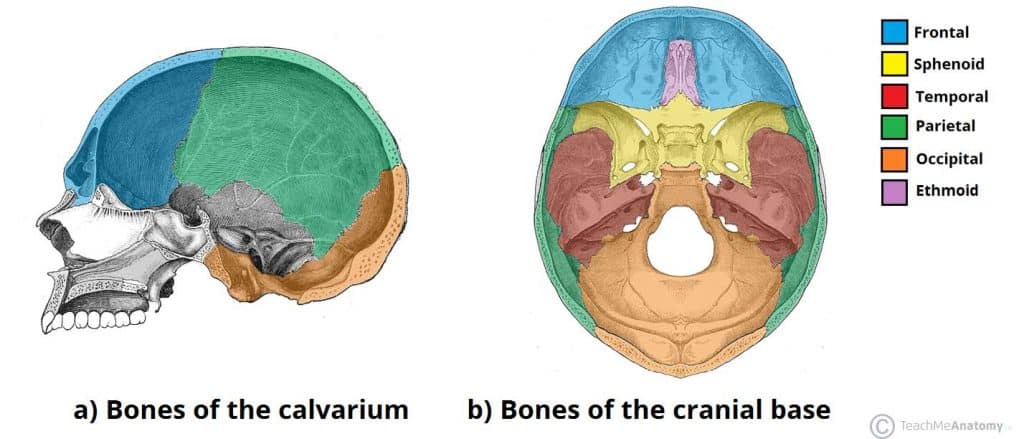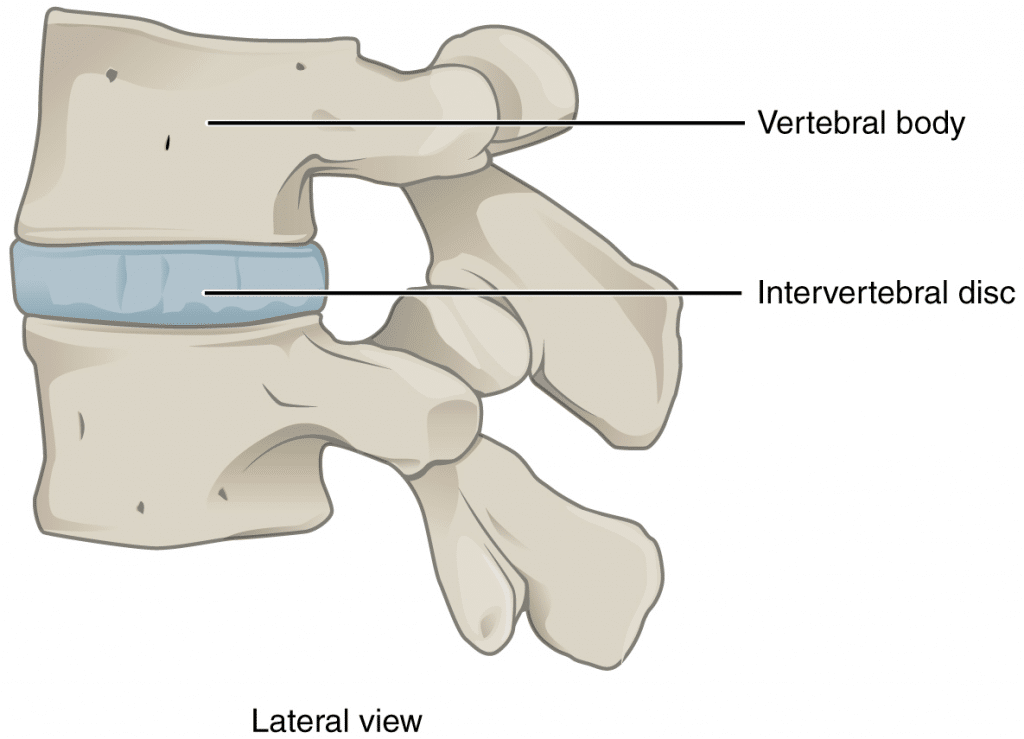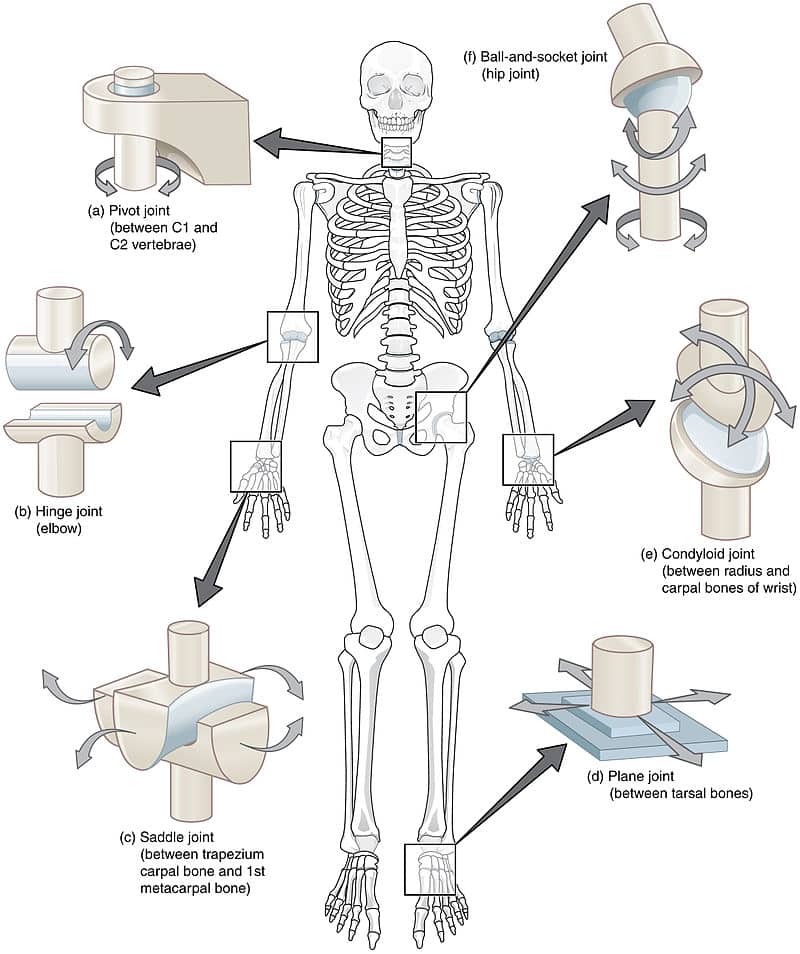A joint is defined as a connection between two bones in the skeletal system.
Joints can be classified by the type of the tissue present (fibrous, cartilaginous or synovial), or by the degree of movement permitted (synarthrosis, amphiarthrosis or diarthrosis).
In this article, we shall look at the classification of joints in the human body.
| Classification by type of tissue: | Classification by degree of movement: |
|
|
Fibrous Joints
A fibrous joint is where the bones are bound by a tough, fibrous tissue. These are typically joints that require strength.
Fibrous joints can be further sub-classified into sutures, gomphoses and syndesmoses.
Sutures
Sutures are immovable joints (synarthrosis), and are only found between the flat, plate-like bones of the skull.
There is limited movement until about 20 years of age, after which they become fixed and immobile. They are most important in birth, as at that stage the joints are not fused, allowing deformation of the skull as it passes through the birth canal.
Gomphoses
Gomphoses are also immovable joints. They are found where the teeth articulate with their sockets in the maxilla (upper teeth) or the mandible (lower teeth).
The tooth is bound into its socket by the strong periodontal ligament.
Syndesmoses
Syndesmoses are slightly movable joints (amphiarthroses).
They are comprised of bones held together by an interosseous membrane. The middle radioulnar joint and middle tibiofibular joint are examples of a syndesmosis joint.
Cartilaginous
In a cartilaginous joint, the bones are united by fibrocartilage or hyaline cartilage.
There are two main types: synchondroses (primary cartilaginous) and symphyses (secondary cartilaginous).
Synchondroses
In a synchondrosis, the bones are connected by hyaline cartilage. These joints are immovable (synarthrosis).
An example of a synchondrosis is the joint between the diaphysis and epiphysis of a growing long bone.
Symphyses
Symphysial joints are where the bones are united by a layer of fibrocartilage. They are slightly movable (amphiarthrosis).
Examples include the pubic symphysis, and the joints between vertebral bodies.
Synovial
A synovial joint is defined by the presence of a fluid-filled joint cavity contained within a fibrous capsule.
They are freely movable (diarthrosis) and are the most common type of joint found in the body.
Synovial joints can be sub-classified into several different types, depending on the shape of their articular surfaces and the movements permitted:
- Hinge – permits movement in one plane – usually flexion and extension.
- E.g. elbow joint, ankle joint, knee joint.
- Saddle – named due to its resemblance to a saddle on a horse’s back. It is characterised by opposing articular surfaces with a reciprocal concave-convex shape.
- E.g. carpometacarpal joints.
- Plane – the articular surfaces are relatively flat, allowing the bones to glide over one another.
- E.g. acromioclavicular joint, subtalar joint.
- Pivot – allows for rotation only. It is formed by a central bony pivot, which is surrounded by a bony-ligamentous ring
- E.g. proximal and distal radioulnar joints, atlantoaxial joint.
- Condyloid – contains a convex surface which articulates with a concave elliptical cavity. They are also known as ellipsoid joints.
- E.g. wrist joint, metacarpophalangeal joint, metatarsophalangeal joint.
- Ball and Socket – where the ball-shaped surface of one rounded bone fits into the cup-like depression of another bone. It permits free movement in numerous axes.
- E.g. hip joint, shoulder joint.



Comments
Post a Comment